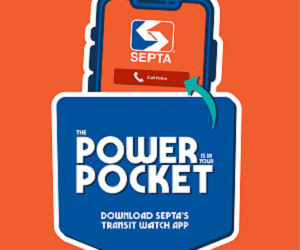
Who Rides Public Transportation
March 6, 2017

Who Rides Public Transportation was prepared for the American Public Transportation Association and authored by CJI Research Corporation. Using data from 695,748 passenger surveys, the study is the most extensive demographic report of public transit riders ever and reveals the face of public transportation riders across the United States. Here's what it said:
89% of riders are in the most economically active segment of the population: individuals age 25 to 54. The balance are divided between those younger than 25 (14%) and those in the age range generally thought of as the retirement years, 65 or older.
71% of public transit riders are employed and another 7% are students, making 78% of riders currently employed or preparing for employment. The balance includes 7% retired persons, 6% unemployed, 3% homemakers.
21% of U.S. households making at least $100,000 per year ride public transportation.
Transit riders come from a wide mix of household sizes. A two-person household is more common (31%) than other household size. However, single person households are also very common, with 26% of riders reporting households of that size. The balance consists of households of three persons (18%) and households of four or more persons (25%).
More than 51% of public transit riders hold a bachelor’s degree or higher level of education.
The single largest group of riders consists of white or Caucasian riders (40%), though communities of color make up the majority of riders (60%). Within communities of color, African-American riders comprised the largest group, at 24 percent. These numbers vary considerably between urban areas of differing sizes.
Most transit riders in the United States are women (55%). This is true for both bus and rail users.

Among all transit users, 85% speak English as their primary language, while 12% speak Spanish and 3% speak other languages.
87% of public transportation trips involve direct economic impact on the local economy, including getting to or from work (49%), shopping (21%) and recreational spending in the local economy (17%). This goes to show that travel behavior has grown beyond commuting to work as people are also using it for shopping AND recreational spending (like entertainment).

63% of public transit riders use it at least five days a week and another 13% use it six or seven days a week. This shows the primary trip purpose for most riders is commuting but also use it to engage in economic activities that grow the economy.
65% of public transit users have a driver’s license, indicating that they have flexibility in travel mode.
Among all riders, 54% indicated there is a vehicle available to them on an ongoing basis, while 46% said there was no vehicle available.
Riders were asked what alternative mode they might use if transit service were not available. The most frequent responses were that they would not make the trip (22%) or that they would use other transit options (20%). The balance, 57%,say they would find a means of travel other than public transportation. More (17%) would drive than any other non-transit mode. However, a total of 16% would either car/van pool, get a ride or take a taxi.
More than two-thirds of public transit users walk to their stop or station, while another 11% drive to their stop and 10% use another form of transit.

Most riders (a total of 53%) are long-term riders in that they have used transit for five or more years. This includes 29% who have used transit for five or six years and 24% who have used it for seven or more years.
Most transit riders, 86%, use a pass medium of some type to pay their fares. The use of cash, once the common fare medium, has diminished to only 11% of the ridership nationally.
Annually, half of the trips made (50%) require a transfer during those trips, and half do not.
Who Rides Public Transportation, a profile of public transportation passenger demographics and travel characteristics is based on a total of 695,748 respondent questionnaires. The surveys included were conducted during eight years from 2008 through 2015. The public transit systems participating the research carried 80 percent of the transit trips made in the U.S. during the study period. To read the study in its entirety go to www.apta.com/WhoRides.
About American Public Transportation Association
The American Public Transportation Association (APTA) is a nonprofit international association of more than 1,500 public and private sector organizations, engaged in the areas of bus, paratransit, light rail, commuter rail, subways, waterborne services, and intercity and high-speed passenger rail. This includes: transit systems; planning, design, construction, and finance firms; product and service providers; academic institutions; transit associations and state departments of transportation. APTA is the only association in North America that represents all modes of public transportation. APTA members serve the public interest by providing safe, efficient and economical transit services and products.



